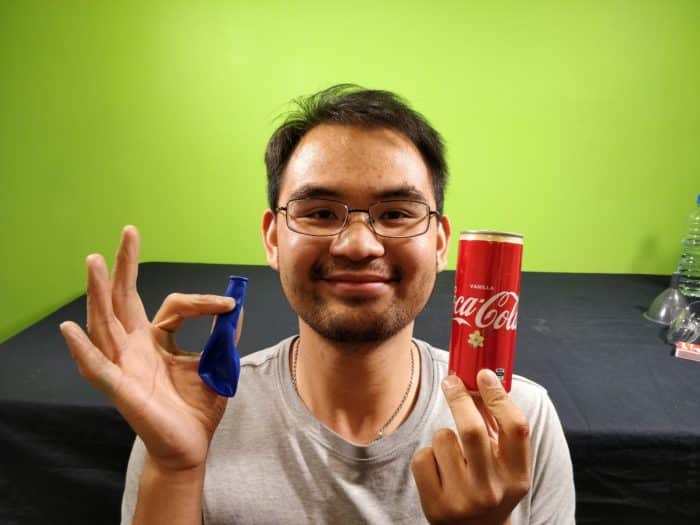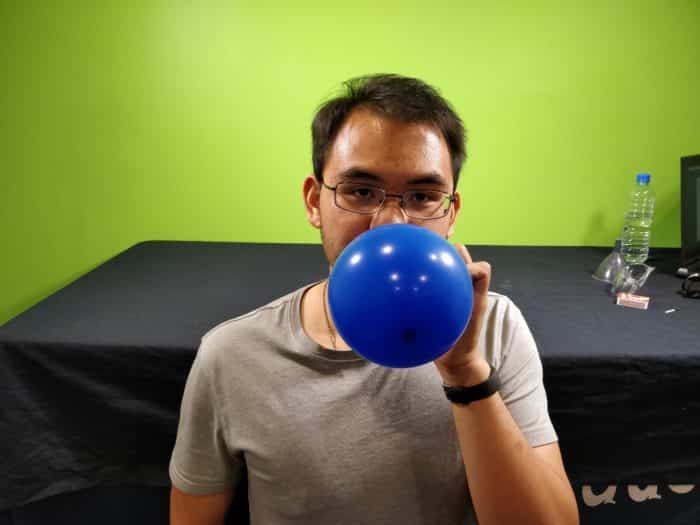You will need:
- One soft drink can (the smaller 200mL cans work best)
- One balloon
- One human volunteer with hair!


Lie the soft drink can on a flat surface, on its side.
Hold the part of the balloon that was touching your volunteer’s head close to the soft drink can, but do not touch it. You should see it roll towards the balloon, seemingly by itself!
Try getting the can to roll and then reverse the direction of motion without touching it.
All static electricity experiments work better on dry days. The greater humidity draws charge away from the objects that you’re using.

Get the Electricity & Magnetism Unit of Work here!
- How does electricity actually flow?
- What makes magnets become magnetic?
- Why is there electromagnetism and what does this tell us about electricity & magnetism?
- From series & parallel circuits to conductors & insulators, there’s a lot to explore & learn!
Includes cross-curricular teaching ideas, student quizzes, a sample marking rubric, scope & sequences & more.

School science visits since 2004!
– Curriculum-linked & award-winning incursions.
– Over 40 primary & high school programs to choose from.
– Designed by experienced educators.
– Over 2 million students reached.
– Face to face incursions & online programs available.
– Early learning centre visits too!
Why Does This Happen?
Everything in the universe is made of atoms: tiny particles that have positively charged parts, protons, and negatively charged parts, electrons, plus some neutral parts, neutrons. Please note that the real structure of the atom is outside the scope of this webpage; if you want a quick high school description of sub-atomic particles check out the Standard Model description on the CERN.
When you rub the balloon on your hair some of the electrons in your hair jump ship onto the balloon. This leaves your hair with more protons than electrons, and therefore an overall positive charge. Similarly, the balloon now has too many electrons, and so has a negative charge. These opposite charges attract, which is why we see your hair stand up, trying to get close to the balloon.
When we put the charged up balloon near the soft drink can, there are two results.
First, the negative charges on the balloon move as far away from the can as possible: similar charges repel! Secondly, the negative charges on the can move as close to the positive charges on the balloon as they can get, creating an attractive force that moves the can along the table towards the balloon.
The charge we create in the balloon is called static electricity. It’s the same charge that gives us a zap on a slide, swing set or trampoline. It’s also the same charge that causes massive lightning bolts. Instead of a balloon and hair rubbing against each other, in a cloud. The tiny particles of ice bump into each other and cause a build-up of charge. When there’s enough charge in the cloud, it’s unleashed as a lightning bolt. A moderate thunderstorm can produce more than 700 megawatts of power, which is more than any of the generators at Loy Yang power station in Gippsland, Victoria.
Variables to test
- Does it matter about the size of ballo0n that you use?
- Try using a plastic pipe instead.
- If the soda can is wet inside, does it affect the results?
- Does a water balloon work just as well? What about a helium balloon?
- Will this experiment work with a spaghetti can?
Create a Buzz!
Years 3 to 6
Maximum 30 students
Workshop or show (NSW & VIC)
60 or 90 minutes
Online Class Available
STEM Full Day Accelerator - Primary
Designed from real classroom experiences, this modular day helps you create consistently effective science learning that directly address the new curriculum with easily accessible and cost-effective materials.































Comments